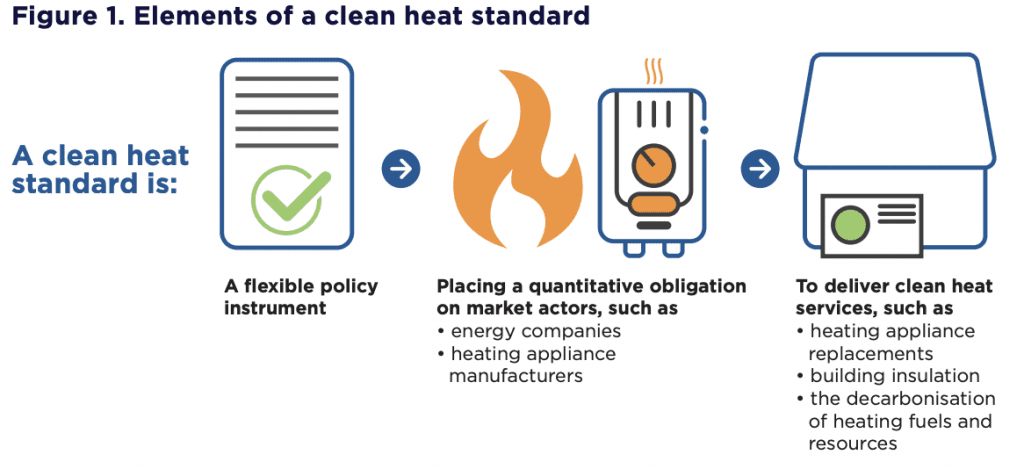Policymakers across the globe are searching for solutions to reduce the use of fossil fuels and their associated climate impacts. Attention has focused on the heating sector, which relies heavily on fossil fuels and was responsible for almost 40 percent of global energy-related CO2 emissions in 2021, according to the International Energy Agency.
Heating decarbonisation efforts include energy efficiency measures and fuel-switching technologies. Many households and building owners face barriers to successfully adopting these clean heating solutions, however, prompting decision-makers to develop policy frameworks using a suite of different instruments.
One emerging policy solution is the clean heat standard. This innovative tool places a performance requirement on heating market actors to increase the uptake of clean heat products and services, and offers flexibility within a range of eligible actions.
The Clean heat standards handbook, written by a RAP team led by Marion Santini, provides step-by-step guidance on constructing one of these policies. It offers insights into how such an instrument might impact various groups.

The authors draw on RAP’s collective and longstanding expertise on energy regulation, alongside experience supporting jurisdictions engaging with clean heat standards, such as Colorado, Maryland, Massachusetts, and Vermont in the United States, and the United Kingdom. Recommendations for those assessing the potential role for a clean heat standard in a given jurisdiction include to:
Consider the specificities of the heating sector, and where barriers to investments prevent the mass deployment of clean heat solutions.
- Place equity issues at the core of the policy design process, including by putting in place inclusive consultation processes involving all communities that will be impacted directly or indirectly.
- Favor pathways that bring long-term benefits to people and the environment. Some solutions might bring greenhouse gas savings but create a lock-in to fossil-fuel-based systems or cause other environmental damages.
- Reflect on the different design options for the clean heat standard, noting that these will influence the outcome of the policy, and that there is no one-size-fits-all solution.
- Explore whether sub-targets can help achieve additional policy objectives, such as the prioritisation of target groups of beneficiaries. This can improve the contribution of the tool to an equitable energy transition.
- Look into complementary policies that would further advance heat decarbonisation, considering that a comprehensive policy mix is needed to address all the barriers.
To aid decision-makers in their efforts to develop robust and equitable policies, the handbook also contains checklists, comparisons to similar instruments in other sectors, and examples of clean heat standards under development or already in use.

